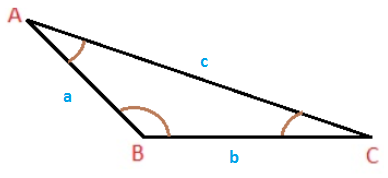A parallelogram has sides with lengths of 24 and 9 . If the parallelogram's area is 135 , what is the length of its longest diagonal?
1 Answer
Explanation:
With these types of questions, it's better to draw a symbolic geometric shape, in this case, a parallelogram. After drawing the parallelogram, draw the two diagonals. You'll see that the longest diagonal is to the opposite side of the obtuse angle. After determining the longest diagonal, you can erase the other diagonal.
Now there should be two triangles in the parallelogram like this;

Consider
This triangle has an area that is half of the parallelogram which is
In order to find
Now we know the angle

